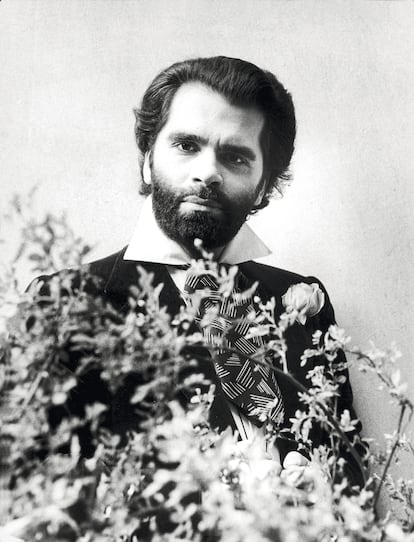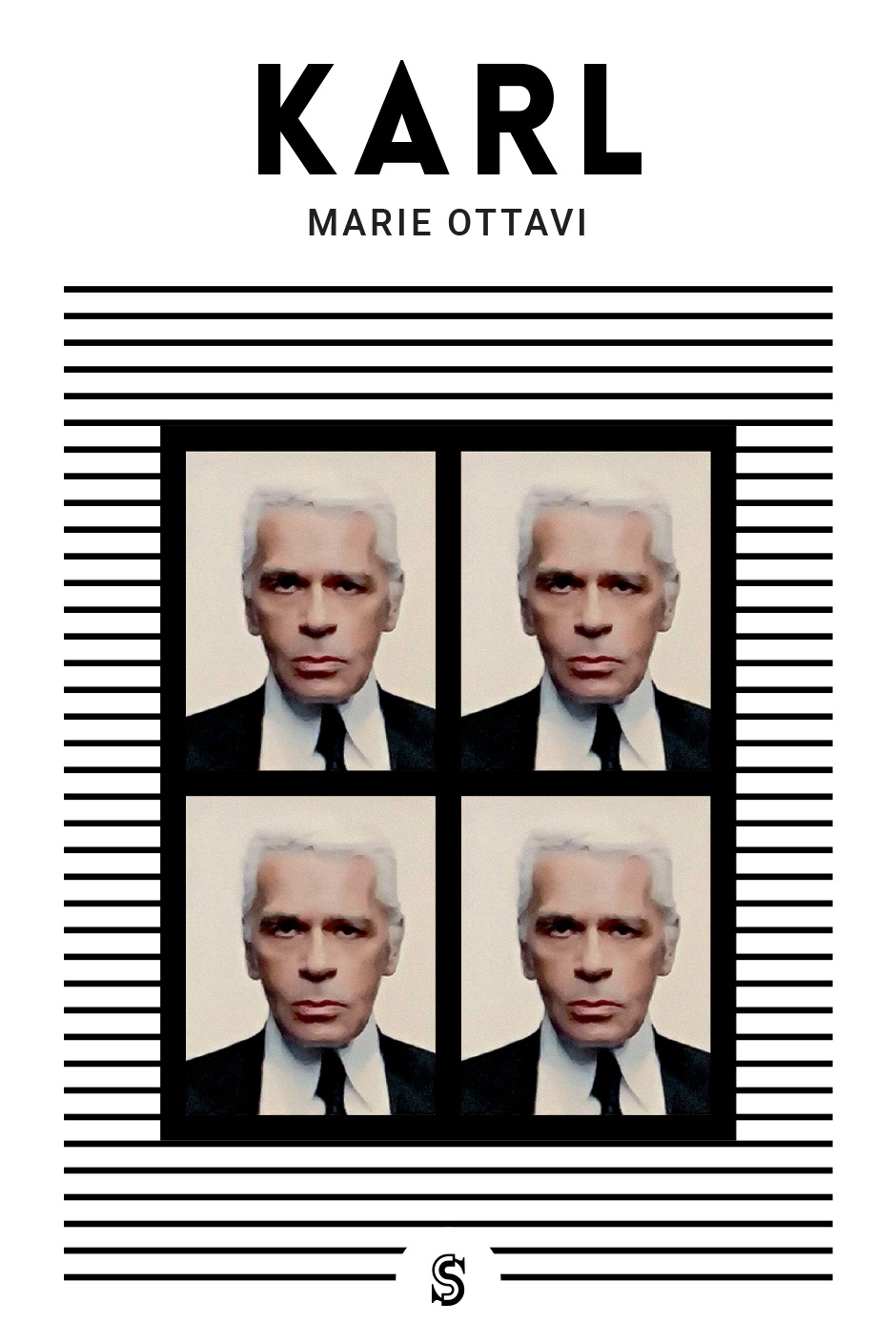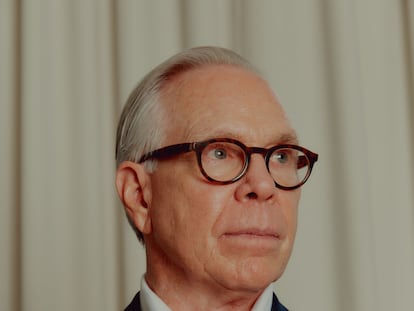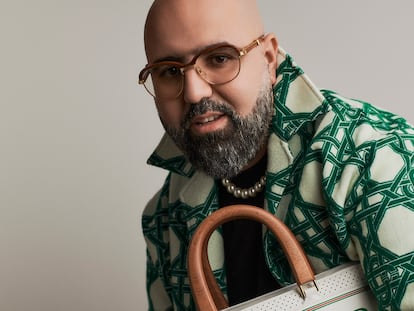Karl Lagerfeld, the insolent genius who obeyed only one order: ‘Don’t be a priest or a dancer!’
The biography of the famed German designer also tells the story of the fashion industry and nearly an entire century. Three years after his death, his legend continues to grow, extending to bookstores, movie theaters and... the Met Gala

When Karl Lagerfeld (1933- 2019) left his native Hamburg to move to Paris at the age of 20, his parents asked him for only one thing: “Don’t you dare become a dancer or a priest!” However, Otto Lagerfeld, a venerable evaporated milk magnate and absentee father, and Elisabeth Bahlman, a cultured woman and implacable mother, could not have predicted that their son’s fate – far from both the church and the cabaret – would be halfway between the two occupations.
For over half a century, Lagerfeld was the closest thing to a religious figure in the fashion world, a legend who was at once imposing and undeniably entertaining. In 2007, he went after journalist Alicia Drake fiercely (in a lawsuit) for telling the story of his perennial rivalry with Yves Saint Laurent (and for revealing his true age) in the riveting essay The Beautiful Fall. But the book also illustrated that the fashion kaiser himself suspected that his biography would be prime narrative material one day. Lagerfeld certainly didn’t lack intuition.
In early October, Jared Leto announced he is making a biopic about the German designer. The actor noted that he will play the role of Lagerfeld, having received the designer’s blessing to do so before he died in 2019; and the actor will produce the film with the help of several of Lagerfeld’s closest collaborators. The movie will be a sort of authorized audiovisual biography to supplement the highly suggestive unauthorized tomes that are already available at bookstores. For instance, Marie Ottavi’s Karl is a monumental reconstruction of the designer’s life and work through testimonies, quotes and her own interviews with him.

Ottavi knows her subject very well. Prior to this book, she published a biography of Jacques de Bascher, the ill-fated and excessive dandy who upended the lives of Lagerfeld and Saint Laurent during the tempestuous 1970s. Lagerfeld, who cared for de Bascher until he died of complications from HIV in 1989, had always refused to talk about this story, a gesture of restraint that his interpreters found to be as eloquent as the sunglasses that hid his gaze and the rings that covered his hands.
Lagerfeld’s obsession with rings arose when his mother was watching him smoke and told him that the way he held his cigarette drew attention to his hands, which were “not very beautiful.” “You can imagine the effect that has on a 14-year-old boy,” Lagerfeld said in 1992. “I haven’t picked up a cigarette since.”
Psychological issues aside, Lagerfeld’s career allows us to explain fashion in the second half of the 20th century, from Haute Couture to memes, in the same way that Coco Chanel’s biography illustrates the first half of the century. Perhaps that is why the Metropolitan Museum of Art will dedicate its 2023 fashion exhibit to Lagerfeld. The designer was an obsessive, very practical worker who understood how to ensure that fashion battles played out not only in memorable creations (such as those of Chanel, Dior or his rival Saint Laurent), but also through evoking a certain atmosphere that, for laymen, was tantamount to fashion itself. Since his death, biographies and books of aphorisms and anecdotes have proliferated. During hist life, Karl was aware of people’s fascination with him; he agreed to star in several documentaries and even published a book with his own slimming diet recipes. Officially, the German disliked the [unauthorized] biographies, but he nevertheless relished telling his biographers the juiciest tidbits he had to offer. As he said repeatedly, he was interested in the future above all else.
Inside the labyrinth

Before she began working on Karl, Marie Ottavi wrote Jacques de Bascher, Dandy de l’ombre (Jacques de Bascher: The Dandy in the Shadows; 2017), the portrait of a man about whom hardly anything was written. “However, there was a ton of information about Karl Lagerfeld out there,” she notes in the foreword. “Without revealing the truth, he spoke unreservedly to all kinds of media, even fanzines stitched together with three threads.” Thus, Ottavi’s book is more kaleidoscopic and polyphonic than the ones by authors Raphaelle Bacqué (also French) and Alfons Kaiser (German). In it, the journalist challenges sources to avoid missing out on any stories. The result is a 600-page book divided into scenes that read almost like reports. Or, as Lagerfeld would have preferred, they read like stories.
Inside the labyrinth
Tu suscripción se está usando en otro dispositivo
¿Quieres añadir otro usuario a tu suscripción?
Si continúas leyendo en este dispositivo, no se podrá leer en el otro.
FlechaTu suscripción se está usando en otro dispositivo y solo puedes acceder a EL PAÍS desde un dispositivo a la vez.
Si quieres compartir tu cuenta, cambia tu suscripción a la modalidad Premium, así podrás añadir otro usuario. Cada uno accederá con su propia cuenta de email, lo que os permitirá personalizar vuestra experiencia en EL PAÍS.
¿Tienes una suscripción de empresa? Accede aquí para contratar más cuentas.
En el caso de no saber quién está usando tu cuenta, te recomendamos cambiar tu contraseña aquí.
Si decides continuar compartiendo tu cuenta, este mensaje se mostrará en tu dispositivo y en el de la otra persona que está usando tu cuenta de forma indefinida, afectando a tu experiencia de lectura. Puedes consultar aquí los términos y condiciones de la suscripción digital.
More information
Archived In
Últimas noticias
There is as much life left to discover on planet Earth as that which is already known
Dozens presumed dead, around 100 injured in fire at Swiss Alps bar during New Year’s celebration
Is porn for women different from conventional porn? We spoke to those who make it
Cartagena de Indias is sinking: What can the city do to mitigate it?
Most viewed
- Reinhard Genzel, Nobel laureate in physics: ‘One-minute videos will never give you the truth’
- David King, chemist: ‘There are scientists studying how to cool the planet; nobody should stop these experiments from happening’
- Sinaloa Cartel war is taking its toll on Los Chapitos
- Oona Chaplin: ‘I told James Cameron that I was living in a treehouse and starting a permaculture project with a friend’
- The Interoceanic Train, the Mexican alternative to the Panama Canal











































